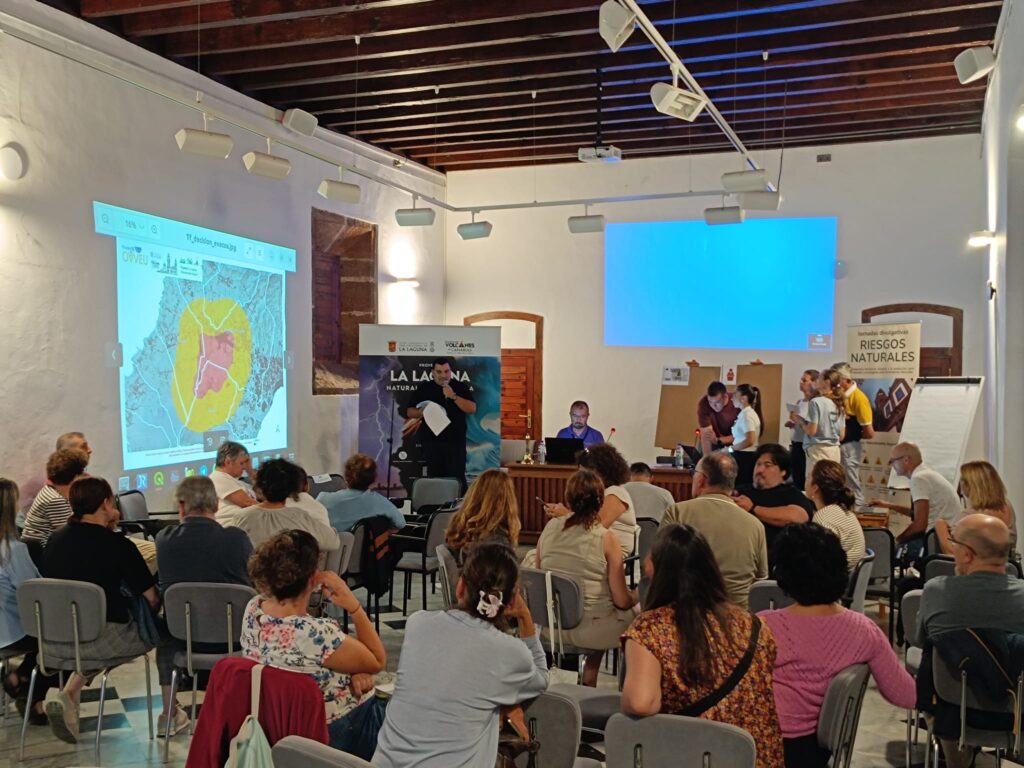The town of Los Cristianos took part on Monday in a poignant event of remembrance and homage to the seven individuals who tragically perished in the collapse of the ‘Julián José’ building, which took place on April 14, 2016.
The mayor, Fatima Lemes, led the ceremony, joined by members of the Municipal Corporation, the president of the local community, Ánima Marrero, and representatives from the Civil Guard, National Police, Local Police, and Civil Protection.
During the event, a minute’s silence was observed, followed by the laying of flowers and candles at the site where the building once stood, marking the ninth anniversary of this sorrowful loss, as noted by the City Council.


Expert Findings on the Building Collapse in Los Cristianos
Two technical reports commissioned by the Arona City Council to investigate the collapse of the Julián José building in Los Cristianos align in their findings: the modifications made to a commercial unit in 2003, coupled with the inferior quality of construction materials and lack of upkeep, were critical factors in the incident. This was confirmed by experts during a ratification hearing held on February 1 before the Court of First Instance and Instruction number 3 of Arona.
The Council engaged two independent entities, Atlantean Slu and Intem, to conduct these analyses. Their findings, submitted to the Court on September 7 and November 7 of the previous year, were based on an examination of the debris and were completed prior to the controlled demolition of the remaining structure, which took place in July. The most significant conclusions drawn from the technical studies are outlined below.
1. Renovations in the Banesto Premises
The Atlantean report directly attributes the collapse to the work performed in premises A, previously occupied by the Banesto financial institution. According to this study, “the removal of interior walls severely compromised the structural framework,” noting that the metal components used to replace these walls were inadequately secured with plastic anchors, lacking the required load-bearing guarantees. “These systems were deemed so unreliable that one of the lawyers involved likened them to hooks for hanging pictures,” the document states.
The report emphasises that, in buildings of this nature, the enclosure and partition walls not only define spaces but are integral to the overall structural stability. It suggests that the reason the property did not collapse sooner is that the load had been distributed between the conventional structure and the walls removed during that renovation.
Despite the degradation of materials and poor design, the experts believe the building may have remained stable if those walls had not been removed or if the reinforcements had been correctly implemented.
2. Inferior Quality Concrete
Inmac’s analysis explores another critical factor: the substandard quality of concrete utilised in the columns. The report concludes that the collapse likely began in one of the internal columns due to a loss of strength, triggering a chain reaction that overloaded adjacent columns. The technicians clarify that the structural changes would not have been so decisive had the original materials met even minimally acceptable standards.
Atlantean further elaborates on this point, detailing that the concrete was of low density, exhibited poor cohesion between aggregates and cement, and lacked sufficient reinforcement at crucial junctions of the structure, exacerbating the overall fragility.
3. Neglect of Maintenance
Another significant factor identified was the absence of corrective actions following the emergence of cracks and visible damage. The Atlantean report highlights that 12 years elapsed without any measures taken to address structural injuries after the initial technical notice was issued concerning the collapse. Such negligence, the experts contend, impacted both the community of owners and the original owner of the premises, whose actions compromised the balance of the building and concealed damage that went undetected until it was too late.
4. Ongoing Work in 2016
At the time of the incident, minor renovations were underway in the premises that was to become a perfumery. During his testimony, one of the technicians clarified that the tools used did not indicate a structural design of significant scale but cautioned that any activity in an already weakened building could serve as a catalyst for disaster.















